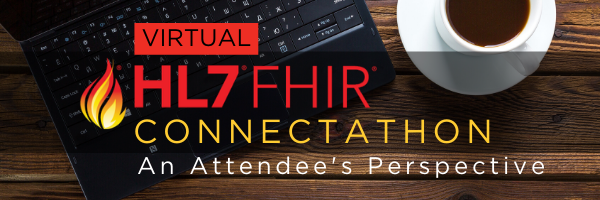
A Closer Look at the 26th Virtual HL7 FHIR Connectathon Held January 13-15, 2021
Despite adjusting almost everything in life to a pandemic-driven “new normal” these past ten months, most of us have discovered a few unexpected benefits from the upheaval. Such is the case for the HL7 FHIR Connectathons, which migrated from in-person to virtual beginning with the May 2020 Connectathon. The January Connectathon #26, occurring last week, carries the distinction of being the largest Connectathon yet – with over 800 participants!
The in-person, face-to-face Connectathons of the past provided a rare (and delightful) opportunity to join developers, implementers, clinicians and interested stakeholders in testing and development of FHIR standards. Moving to the virtual format, however, has allowed more people to participate without having to travel to the event.
What Happens at a FHIR Connectathon?
If you are still fuzzy on the detailed activities of Connectathons—and whether you should attend one, there are many avenues where you can learn more. FHIR Connectathons serve as events that are centered upon developing the FHIR specification; including resources, profiles, and implementation guides (IG). The first Connectathon occurred in September 2012 and readily set the stage for future Connectathons that typically occur in the days ahead of an HL7 Working Group Meeting, thereby encouraging members to participate in both.
Connectathons are an important ingredient of the “FHIR Community” – whose vision is: “Enabling Health Interoperability through the use of FHIR and using that to deliver improvements in healthcare provision throughout the world.” The FHIR Community welcomes all new participants to an open framework of education and integration of FHIR. To participate in FHIR discussions – and follow along in real time at Connectathons – create a profile and join a topic-focused stream at https://chat.fhir.org/. Be sure to read the FHIR community expectations as they provide critical guidance on how to most efficiently (and appropriately) ask questions and which tracks to use for what.
A Closer Look at the Care Coordination Track
Let’s look at the Care Coordination Track. This track has evolved over a few years, from a patient-centered multi-disciplinary care plan, to include the Multiple Chronic Conditions eCare Plan Project and the Logica Care Management Project. The track tested the MCC eCare plan FHIR IG (additional details here: Overview of MCC eCare plan FHIR IG) using SMART on FHIR apps – both patient-facing and provider facing. They successfully tested an American College of Emergency Physicians (ACEP) COVID-19 Emergency Department severity risk assessment, created a patient-centric intervention in the care plan utilizing evidence-based clinical practice guidelines. There are many more nuances in this track that demonstrate real world data and solutions. Be sure and check out all of the Care Coordination Track notable achievements!
Background on Tracks
Last week’s Connectathon included 39 tracks – each one focused upon a specific use of FHIR to solve a healthcare need. There is a detailed process required to create a “track” and is an activity driven by the FHIR Maturity Model so that FHIR artifacts are tested and improved over time. To gain insight of the results of each track, do not miss the Connectathon Track Report Outs, as these provide great overview of each track's participants, testing and results.
While Connectathons are international in scope, a key focus for U.S. participants is on the HL7 FHIR U.S. Core Implementation Guide, which stands as a foundational component of other U.S. FHIR artifacts for the U.S. Realm. Also woven into the Connectathon are discussions on U.S. regulations embracing standards and interoperability from the Office of the National Coordinator for Health Information Technology (ONC) and the Centers for Medicare and Medicaid Services (CMS).
By now, you can likely tell Connectathons are expertly managed and recorded, succeeding in standards design and testing, embracing rare collaboration between vendor competitors and proceeding as dedicated teams – all working towards the common goal of health care improvement via the FHIR specification and interoperability.
Questions?
Still have questions? The Connectathon FAQs provide answers that will likely make you confident in joining a Connectathon – even if your expertise is more clinical than technical. By the way, creating the best health IT standards requires technical, organizational, and clinical expertise.
Conclusion
After an unprecedented, challenging year for us all, it is poignant to have an event that leaves a positive indelible impact on an area that perhaps needs it most—healthcare.


.jpg?width=100&height=100&name=lIndsey%20Headshot%20Square%20(002).jpg)